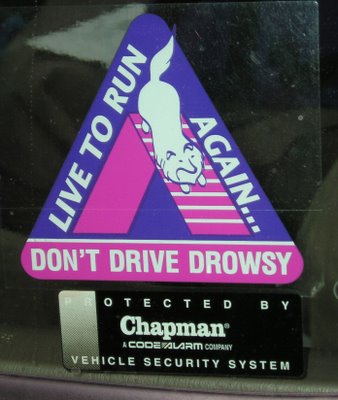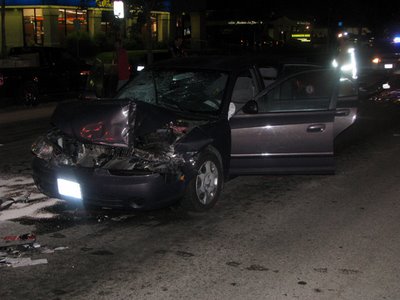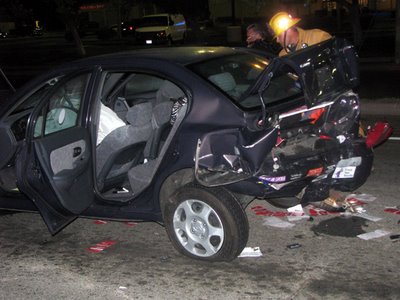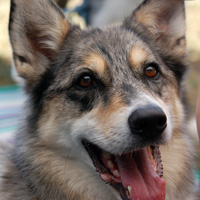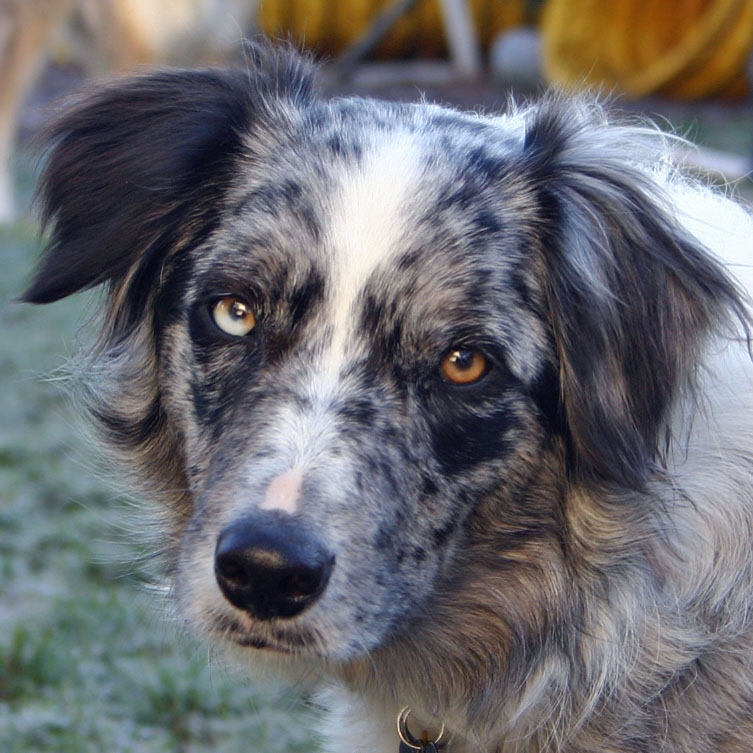Lessons From The Weekend
- Photography: MM, who is a semipro photographer (as in makes money at it but I dont think makes most of her income from it), commented about how she didn't feel like bringing her camera this weekend because she didn't think she'd have time to shoot anything and she didn't want to make the effort to get it ready and bring in, and then was inundated with requests for photos and there was no photog here at all, all weekend, said that the lesson is: Just always bring your camera. My version is: If you have your camera around your neck, you will use it. If it is sitting next to your dogs' crates and you're working score table and running 2 dogs all weekend and the days are long, you won't. Can you believe I was at a trial all weekend and this is the only photo I took?

Because these rustic rural greater-than-life-sized carved wood statues are new to this site, and they stood out like sore carved-wood thumbs against the underside of the modern all-metal bleachers where they store large steel barrels for trash. You couldn't not notice these guys welcoming you as you walked through the gate to go to the restroom - Boost weaves: Twice this weekend, I was ahead of Boost at the weave entry and she entered correctly but so hard that she bounced off the 2nd pole and skipped one. Something to work on. We had some other weave issues this weekend of the random sort, but I still count hr weaves as successful when she's not popping out at the end, which she never did.
- Boost staying in crate: I came back to my crates after working the score table for a full round and discovered that I had never zipped Boost's crate, and she was still inside. What a good girl! Training does pay! (Although I can't picture that working for Tika...)
- Boost bars: Grumble. Both gambles executed perfectly except for knocked bars. That's not supposed to be the hard part! Must work more.
- Boost elbows off table: On Saturday, she never did get her elbows down on the table. (But we had already Eed, so it didn't matter.) Sunday, we worked on excited down-stays on the ground before going into the ring, and her table down was perfect. Same result as last weekend. Training does pay! Need to remember to do this before every Standard round!
- Boost smooth runs: I see some progress. Our Standard run Sunday was so close--no runouts or refusals or knocked bars--but she left the table early when I led wayyy out and ended with an off-course. But I was still happy with it. Jumpers Sunday was also close, with just a bar and an issue on the lead-out pivot (which isn't the same thing as when we're running). So practice does pay. Just need to keep at it.
- Boost practice with lots of space: Things that I need to work on up at Power Paws or somewhere where there's lots of space: Lead-out pivots more more more. Just sending her ahead of me over long lines of jumps. She's still turning back to me and then eventually waiting, resulting in refusals or runouts. Can work on a little bit of jump-focus rather than me-focus here at home, but still I'll bet that just running in a huge U of jumps around the entire field would be a good thing to do many times.
- My brain: Forgot Tika's course twice this weekend. Didn't feel stressed, they weren't particularly important or stand-out runs. It's very odd. I wonder if there's a trend? Something to ponder. It's also funny, because one of them I had just run correctly with Boost. That alone cost me two Qs this weekend.
- Tika's contacts: She does them so fast & such good 2 on/2off in training. I've let them completely go to heck in competition. Do I want to try to fix them? Aframes I can force her to get a foot or two in if I get in front of her as she's coming down, so if I can plan the course so that I'm front crossing or running past, she's fast and hits it. Maybe it's good because it forces me to keep moving ahead of her. But it's bad when I can't, as in Saturday's Steeplechase, with 2 Aframes, where she was way ahead of me both times and wasn't even close to getting a toe in. Maybe I just need to run faster! But contacts alone cost us 2 Qs this weekend.
- Tika's bars: Knocked a bar in Snooker opening, so we definitely wouldn't have Super-Qed. Knocked a bar in both Saturday's and Sunday's Jumpers. Bars alone cost us two Qs this weekend.
- Trust all your senses; even measuring tools lie: Quite a few dogs didn't make time on Saturday's Master Standard course. When dogs who moved pretty smoothly through the course on Sunday were also over time by 5 or 10 seconds or more, there was considerable debate about whether the calculations were correct. The judge, after listening to several complaints, did finally say that the yardage for the course seemed odd for what she had laid out. So someone walked the measuring wheel along a 50-foot measuring tape and came up with 41 feet. That poor scoretable. Fortunately it was only Saturday's and Sunday's Masters Standards that they had to review for over-time dogs; nothing else in that ring to that point had required the measuring wheel.
- I'm happy with two dogs: All kinds of people have new puppies! Blue merle Border Collies! Blue merle Pyrenean Shepherd! They are VERY cute and quite beautiful. And, no, I don't find that I have any urge at all right now to add a puppy to my clan.
Labels: Boost jumps, Boost weaves, crates, jumps-jumping-bars, photography, Tika, Tika contacts, training, trial results
Complete list of labels
